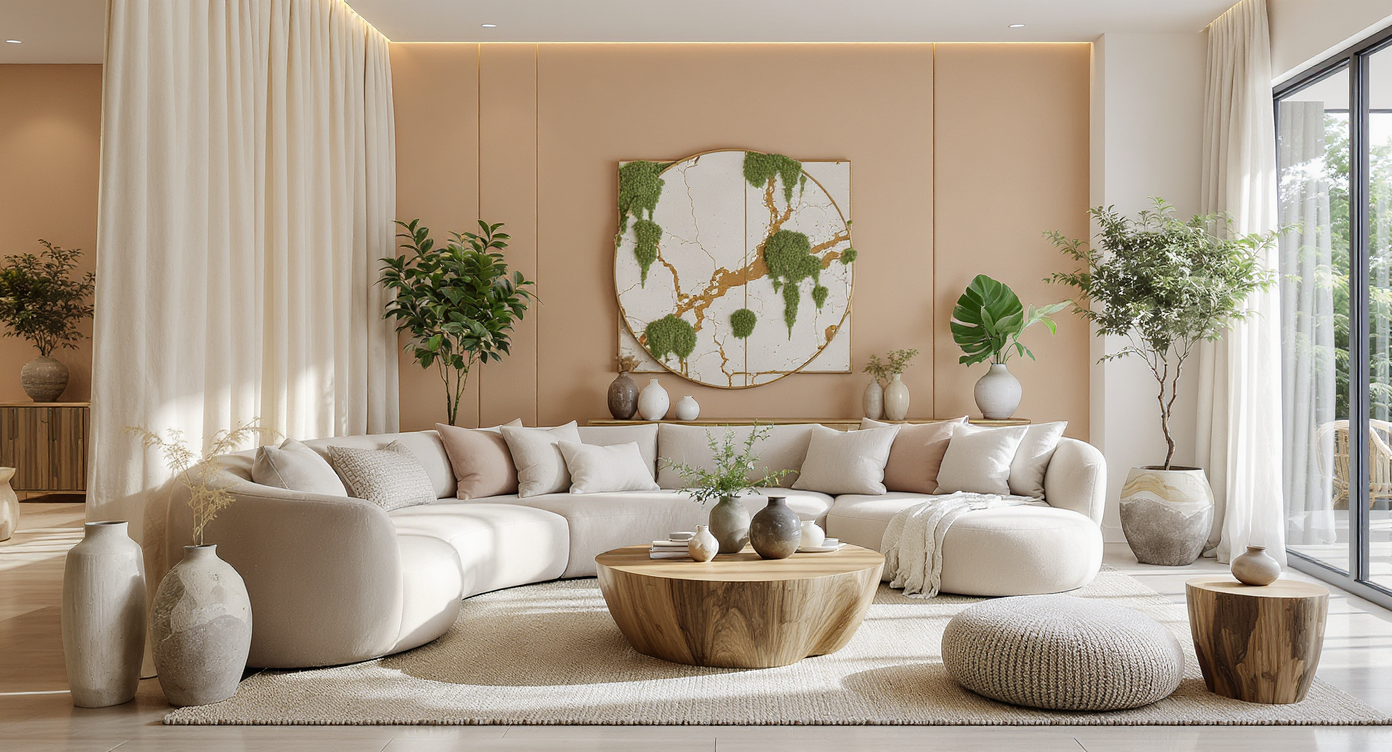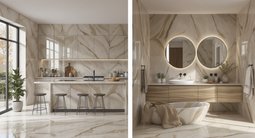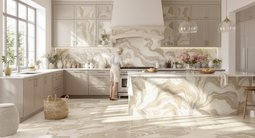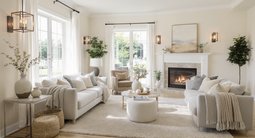TL;DR
Homes in 2026 embrace warm neutrals, curved furniture, natural materials, flexible floor plans, and discreet smart home design. Expect tactile finishes and personal layers replacing stark showrooms, with biophilic design and multi-use rooms leading the way. Explore how to place curved sofas, use earthy tones, and plan multi-functional spaces with one long-tail keyword: how to design a multi-purpose living room.
Opening

Explore 2026’s top trends: warm neutrals, curves, biophilic textures, smart lighting, and seamless, adaptable spaces.
2026 interior design trend essentials: warm neutrals, curved furniture, biophilic design, multi-functional rooms, and smart home design.
Here’s the thing: the best homes right now don’t feel staged. They feel lived in. Designers are dialing up texture, soft geometry, and earth-driven palettes so rooms look collected, not copy-pasted. The result is comfort with intention — spaces that work hard on weekdays and exhale on weekends.
After years of high-gloss minimalism, people want warmth, longevity, and layouts that adapt. Think curved sofas that invite conversation, oak and limestone that patina, and lighting that shifts from focus to unwind with a voice command. The thread connecting every interior design trend this year is simple: design should feel like you, and it should flex as your life does.
Trend Overview
Trend Overview: Why 2026 Interiors Feel Softer and Smarter
Designers note a decisive move toward warm neutrals, curved furniture, biophilic design, and smart home design that hides the tech and elevates daily life.
This year’s interiors are slowing down — trading hard edges for soft curves, and flat finishes for plaster, linen, wood, and stone. The palette leans earthy: camel, cocoa, olive, clay. Sustainability shows up as real materials and fewer, better pieces. And because many of us work, workout, and wind down at home, multi-purpose planning sits alongside beautiful lighting and intuitive controls.
Suggested alt text: Warm neutral living room with curved sofa and oak coffee table; Suggested caption: Warm neutrals and soft geometry define the 2026 mood.
Anecdote
A client with a narrow 1920s apartment hated their echoey, all-white living room. We added a clay-taupe limewash, swapped a boxy sofa for a compact curved loveseat, and layered a wool rug over existing wood floors. The room felt wider and warmer — and their weekly game night returned because conversation suddenly flowed. Sometimes one curve and one texture change the whole script.
Design Trend Sections
Trend 1: Warm Neutrals & Earthy Tones
Warm neutrals set the baseline in 2026, replacing cold gray with camel, taupe, sand, and tobacco for a human, light-friendly interior.
Designers often advise a 60-30-10 rule: 60 percent warm base (walls/rug), 30 percent supporting neutrals (sofa/curtains), and 10 percent accent color (rust, fig, sage). These earthy tones are easy on skin tones and can make small spaces feel calmer than stark white. If you’re repainting, experts recommend aiming for Light Reflectance Values around 60 to 70 to keep rooms bright without glare. Texture is crucial: pair flat paint with nubby upholstery, limewash, or textural rugs so the palette reads layered, not flat.
Suggested alt text: Taupe walls with clay accents and linen sofa; Suggested caption: Earthy neutrals gain depth through texture and light.
How to Bring It Home
- Choose a warm neutral wall color with an LRV between 60–70 for balanced brightness.
- Mix tones: beige walls, cocoa drapery, and a rust throw for contrast.
- Use matte or eggshell finishes to enhance texture and reduce glare.
Trend 2: Soft Curves & Organic Shapes
Curved furniture and soft-edged decor displace the grid, making living rooms and bedrooms feel more welcoming and social.
A curved sectional can subtly define zones in open floor plans while improving circulation; leave at least 36 inches of walkway around major pieces. Rounded mirrors, drum side tables, and scalloped lighting echo the curve language without overdoing it. In dining rooms, an oval table seats more guests in tight rooms than a rectangle of the same length. Designers say curves read “restful” to the eye, which matters in busy, multi-purpose homes.
Suggested alt text: Curved sectional and round coffee table; Suggested caption: Soft geometry fosters conversation and flow.
How to Bring It Home
- Float a curved sofa 8–12 inches off the wall to create breathing room.
- Anchor curves with one linear piece, like a rectilinear credenza, for contrast.
- Layer a round rug under a round table to reinforce the shape language.
Trend 3: Biophilic Design & Natural Materials
Biophilic design connects homes to nature through light, air, and honest materials like wood, stone, rattan, and clay.
Experts recommend targeting a window-to-wall ratio around 20–30 percent for daylight comfort, then softening with sheers to control glare. Aim for at least 50 percent of visible surfaces to be natural materials — oak floors, travertine tops, linen curtains — to ground the space. Even small interventions help: a live-edge shelf, a sisal runner, or a cluster of plants sized to the room’s volume (one medium plant per 50–75 square feet is a handy rule of thumb). Natural textures improve acoustic comfort and visual calm.
Suggested alt text: Sunlit living space with oak, limestone, and plants; Suggested caption: Biophilic layers bring nature’s calm indoors.
How to Bring It Home
- Swap one synthetic surface for wood or stone in each room.
- Use full-spectrum bulbs (CRI 90+) where daylight is scarce.
- Add a planter bench near a window to merge seating and greenery.
Trend 4: Multi‑Purpose, Modular Rooms
Flexible layouts let one room handle work, wellness, and hosting, without feeling like a utility closet.
Think of space in modes. A dining room becomes a studio with a folding screen; a guest room adds a wall bed and a 24–30 inch deep built-in desk. Keep storage vertical and zone lighting on separate circuits or smart scenes. As a rule, provide 30–36 inches of clearance around tables and at least 24 inches knee space at desks. Modular pieces — nesting tables, stackable stools, plug-in sconces — make weekday-to-weekend transitions fast and graceful.
Suggested alt text: Dining office hybrid with wall bed and concealed storage; Suggested caption: Modular planning turns rooms into shapeshifters.
How to Bring It Home
- Use area rugs to define “work,” “dine,” and “relax” zones in one rectangle.
- Choose a drop-leaf or extendable table to scale for guests.
- Program smart scenes: Work (bright/cool), Dine (warm/dim), Movie (low/spot).
Trend 5: Quiet Tech — Smart Home Design That Disappears
Smart home design in 2026 is less about gadgets on display and more about seamless control, comfort, and energy savings.
Designers often recommend recessing speakers, using paintable cable channels, and integrating voice or app-based scenes for lighting and climate. Place pendants 30–36 inches above kitchen islands and set color temperature between 2700K and 3000K for evening use. Small upgrades add up: occupancy sensors in closets, motorized shades for south-facing windows, and hidden charging in drawers. The goal is a calm visual field with intuitive tech support.
Suggested alt text: Minimal living room with hidden speakers and warm lighting; Suggested caption: The smartest rooms don’t look "techy."
How to Bring It Home
- Consolidate controls: one app or hub for lights, shades, and climate.
- Hide cables with in-wall raceways or furniture with cord cutouts.
- Choose dim-to-warm LEDs to shift from task to ambient on command.
Crossovers, Contrasts, and Pitfalls
Trend Crossovers & Contrasts
Though distinct, these trends share a love of texture, restraint, and personal comfort rooted in nature.
Warm neutrals flatter soft curves, while biophilic materials supply the tactile depth minimalism lacked. Quiet tech complements modular planning: scenes change a room’s purpose as easily as moving a stool. The contrast is intentional — organic shapes meet crisp storage; earthy palettes get a spark from a single saturated accent. The winning formula: fewer pieces, better materials, smarter light.
What People Often Get Wrong About 2026 Design Trends
Great spaces balance mood, function, and detail. Avoid these common missteps.
- Mistaking warm neutrals for beige-on-beige — add contrast with wood grain, black accents, or patterned textiles.
- Overdoing curves — pair rounded seating with one linear anchor to keep structure.
- Forgetting clearance — keep 36 inches around primary paths to prevent crowding.
- Buying “eco” without substance — prioritize durable, repairable materials over trend-driven disposables.
- Showing off tech — hide hubs and cables; the best smart home design is invisible.
Expert Tips, Tools & Visualization
Expert Insights & Mini‑Anecdotes
Experts recommend anchoring any room with one natural material that ages well — oak, walnut, travertine, or wool — then building color and light around it.
One family swapped a gray sectional for a camel, curved sofa in bouclé; overnight, their living room felt warmer and more conversational. A renter layered peel‑and‑stick linen‑look panels behind the bed and added dim‑to‑warm bedside sconces; sleep improved and so did late‑night reading. A small‑space couple replaced a bulky desk with a 28‑inch wall‑mounted surface and a folding chair; the dining nook now toggles between office and brunch in seconds. Designers often note that “the most successful rooms choose comfort first, then edit for clarity.”
Tools, Resources & Visualization
Test palettes, curves, and layouts before you buy. With ReimagineHome, you can upload a photo, try warm neutral paint, drop in a curved sofa, toggle stone vs. wood, and preview smart lighting scenes.
Picture this: a living room in soft taupe, a rounded linen sofa facing a low oak table, woven drapery filtering afternoon sun, and lights shifting from 3000K task to 2700K unwind — quiet luxury without pretense. Use the tool to compare zone plans and clearance, then save boards for contractors or partners.
Visualization Scenario
Open ReimagineHome, upload your living room photo, and test two scenes: Day (sheer-filtered light, 3000K lamps, camel sofa) and Night (dim-to-warm 2700K, rust throw, travertine side table). Drag a curved sectional into the layout, check the 36-inch clearance overlay, and compare oak versus limestone tables side by side.
FAQs
How do I use warm neutrals without making my room look flat?
Combine warm neutrals with layered textures and a 60-30-10 color balance, then add one high-contrast element like black metal or walnut.
What’s the best way to place a curved sofa in a small living room?
Float the curved sofa 8–12 inches off the wall and keep 30–36 inches of clearance on traffic sides for flow and conversation.
How should I design a multi-purpose living room that works for work and entertaining?
Zone with rugs and lighting scenes, choose extendable tables, and use vertical storage so the room can switch modes quickly.
Which natural materials are most durable for high-traffic areas?
Experts recommend oak or maple for flooring, wool for rugs, and sealed limestone or quartzite for surfaces that see daily wear.
How do you hide smart home technology in a minimalist space?
Integrate in-wall raceways, recess speakers, centralize controls in one app or hub, and use dim-to-warm LEDs to keep tech visually quiet.
Wrap-Up
Design in 2026 favors presence over perfection. Warm neutrals, soft curves, biophilic textures, flexible layouts, and discreet tech help homes feel supportive, not performative. When rooms adapt to your life — and materials feel good in your hands — style becomes second nature. Start small with one curve, one natural surface, or one smart scene, then build with intention. Your home should evolve with you — and invite you to stay a while.
Ready to visualize it? Try your ideas in minutes with ReimagineHome and see how these trends look in your own space.
.svg)

.svg)














.png)